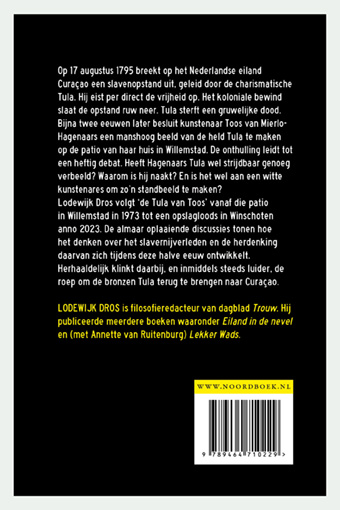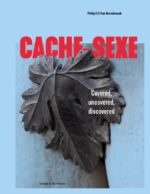Tula
€ 16,90
Op 17 augustus 1795 breekt op het Nederlandse eiland Curaçao een slavenopstand uit, geleid door de charismatische Tula. Hij eist per direct de vrijheid op. Het koloniale bewind slaat de opstand ruw neer. Tula sterft een gruwelijke dood. Bijna twee eeuwen later besluit kunstenaar Toos van Mierlo-Hagenaars een manshoog beeld van de held Tula te maken op de patio van haar huis in Willemstad. De onthulling leidt tot een heftig debat. Heeft Hagenaars Tula wel strijdbaar genoeg verbeeld? Waarom is hij naakt? En is het wel aan een witte kunstenares om zo’n standbeeld te maken?
Lodewijk Dros volgt ‘de Tula van Toos’ vanaf die patio in Willemstad in 1973 tot een opslagloods in Winschoten anno 2023. De almaar oplaaiende discussies tonen hoe het denken over het slavernijverleden en de herdenking daarvan zich tijdens deze halve eeuw ontwikkelt. Herhaaldelijk klinkt daarbij, en inmiddels steeds luider, de roep om de bronzen Tula terug te brengen naar Curaçao.
Lodewijk Dros is filosofieredacteur van dagblad Trouw. Hij publiceerde meerdere boeken waaronder Eiland in de neve en (met Annette van Ruitenburg) Lekker Wads.
Gerelateerde boeken
-
-
Cache-sexe
€ 34,90This book asks why humans through history have covered their genitals and worn a cache-sexe. Does the cache-sexe merely provide protection, or is it an instrument to draw attention? Can the cache-sexe be used to stimulate certain thoughts? Why does not wearing a cache-sexe provoke shame one society but not in another? Are nudity and nakedness the same?
On his quest to answer these questions, the author takes the reader on a review of the anatomy of the female and male genitals and reflects on how this part of the human body has been perceived over time and in various cultures. The different types of male and female cache-sex are discussed with reference to comprehensive illustrations based on unique and sometimes previously unpublished examples of cache-sexes and photographic documentation. The book also pays attention to the covering of the ‘backside’. Following this 360° exploration of the use of the cache-sexe, the place of the cache-sexe in art and fashion is uncovered.
Philip Van Kerrebroeck is an urologist and professor emeritus of Urology at the University of Maastricht. Born in Leuven (Belgium), he trained in Surgery and Urology in Brussels, Utrecht, Nijmegen and San Francisco. Over the years, he has also developed an interest in the history of urology and cultural anthropology. He is currently chairman of the History Office of the European Association of Urology (EAU).
-
-





